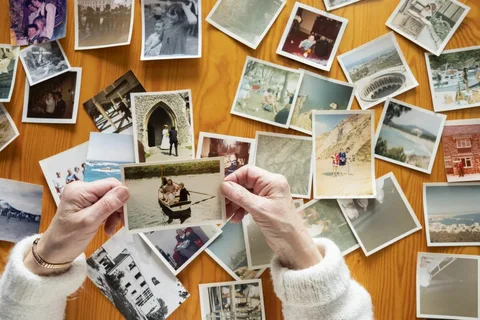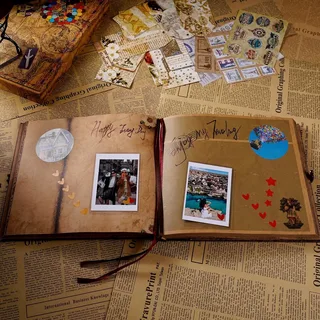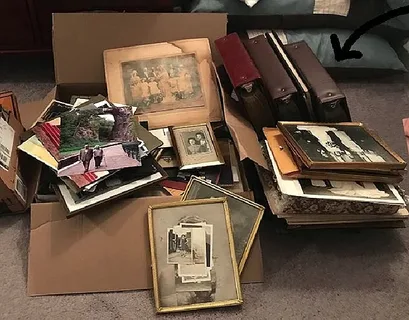
Preserving generations of memories the classic way
In the age of smartphones and cloud storage, the physical photo album may seem outdated to some. However, its enduring emotional and cultural significance proves otherwise. The timeless charm of photo albums lies in their ability to preserve memories in a tangible, curated, and intimate format. They offer something digital galleries often lack — presence, sentiment, and permanence.
Why Photo Albums Continue to Matter
Photo albums are not just storage tools. They are visual narratives. Each page is carefully organized, every image purposefully chosen. Unlike digital files that can be forgotten in folders, physical albums are revisited often. They invite interaction during family gatherings, holidays, or solitary moments of reflection.
More importantly, they require attention. Flipping through pages, seeing real prints, and touching the texture of the paper creates a sensory connection. This physical interaction grounds people in the memory, making the experience more meaningful than scrolling through screens.
Photo Albums as Emotional Anchors
The emotional power of photo albums is unmatched. They bring smiles, evoke nostalgia, and sometimes tears. For those grieving, remembering, or simply reconnecting, albums offer quiet comfort. They help bridge distances of time and space.
Unlike digital galleries often organized by algorithms, albums are curated manually. This intentionality deepens their personal value. A birthday, a wedding, or a vacation spread across pages shows not just moments but emotions, growth, and stories.
Albums Across Generations
Photo albums hold stories that span generations. Grandparents show them to grandchildren. Parents recall long-forgotten events. Children learn family history through images. This creates a lineage of memories, solidifying identity across time.
In a digital culture where content often disappears within hours, albums offer permanence. They are passed down, becoming family heirlooms, offering insight into who we are and where we come from.

The Difference Between Albums and Digital Storage
Digital photos can be lost with a hardware crash, corrupted file, or expired cloud subscription. They often exist in abundance, unfiltered and disorganized. On the other hand, a photo album is intentional. Each picture is carefully chosen, often printed for a specific reason. There is thought behind every page.
Albums also exist outside of electricity and internet. They do not require passwords or devices. They are accessible and easy to share anytime, anywhere.
Creative Expression Through Photo Albums
Albums are not limited to just storing images. They are a creative outlet. People design them with scrapbook elements, stickers, handwritten notes, pressed flowers, or ticket stubs. Each element adds personality and story depth.
Some albums focus on themes — travel, weddings, anniversaries, childhoods. Others are chronological life collections. Either way, they are personalized art pieces.

Mental Health and Memory Support
Revisiting photo albums supports mental health. Recalling happy events helps lift mood, reduce stress, and reinforce self-identity. In therapeutic settings, especially for elderly individuals with memory loss, photo albums are essential tools.
Visual triggers from familiar photos can spark conversations and recognition, particularly in Alzheimer’s or dementia care. The emotional memory often lasts longer than verbal memory, making photo albums especially powerful in these settings.
Photo Album Preservation Tips
To protect photo albums long-term, store them in cool, dry environments away from direct light. Use acid-free paper and archival-safe adhesives. Do not store albums in damp basements or hot attics.
If you want digital backups, scan each page at high resolution and save them both locally and in cloud storage. This preserves the layout and sequencing while maintaining accessibility.

Modern Alternatives: Printed Photo Books
Today, many services offer printed photo books — custom-designed, hardcover albums made from your digital images. While not identical to hand-crafted albums, they offer a convenient, modern way to enjoy the same benefits.
These books often allow users to write captions, organize pages, and select layouts — merging digital ease with physical beauty.
Cultural Relevance and Historical Insight
Photo albums are more than personal records. They are cultural artifacts. They document traditions, clothing, landscapes, and rituals. Historians and anthropologists use them to understand societal changes.
Wedding albums, baby books, and graduation keepsakes reflect not only individual stories but shared cultural values. They capture moments that become part of broader social memory.
Conclusion: A Legacy Worth Preserving
The timeless charm of photo albums lies in their humanity. They tell stories, hold emotion, and connect generations. Whether handcrafted or professionally printed, photo albums offer more than images — they hold pieces of life.
In a time dominated by fleeting digital content, photo albums invite us to slow down and reflect. They are not just relics. They are living stories worth preserving.
For more articles that celebrate heritage and memory, visit Magazines Break.
FAQs
Why are photo albums still relevant today?
They offer emotional depth, permanence, and tangible interaction that digital galleries lack.
Can photo albums help with mental well-being?
Yes, they improve mood, support memory recall, and reinforce identity.
What is the best way to store old photo albums?
Use acid-free materials and keep them in dry, cool, dark places to avoid damage.
Is it worth making a photo album if I already use cloud storage?
Absolutely. Albums create a curated, intentional collection that holds sentimental value.
What’s the difference between a photo album and a printed photo book?
Albums are often handcrafted and personal, while photo books are professionally printed and structured.
How can albums help people with dementia?
They trigger memory through visual recognition and stimulate meaningful conversations.
Are photo albums better than digital backups?
They serve different purposes. Albums offer physical emotional connection, while digital backups ensure preservation.
Can I turn digital photos into a physical album?
Yes, many online services allow you to create custom photo books from your digital collections.
What type of photo album is best for preservation?
Look for archival-quality, acid-free albums with protective sleeves.
Do photo albums hold cultural value?
Yes, they serve as historical artifacts reflecting traditions, lifestyles, and social values.





